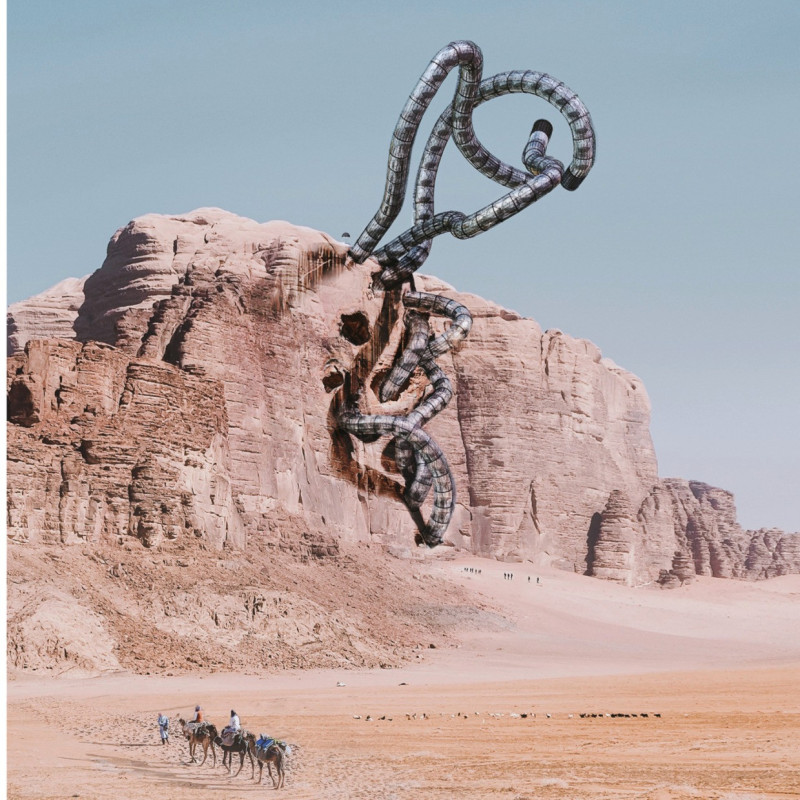5 key facts about this project
Tactile Symbiosis: Reclaiming The Mountain is located in Wadi Rum, Jordan, a region known for its unique landscape and rich cultural history. The design aims to rethink the role of skyscrapers by blending their presence with the natural environment. The focus is on creating a building that promotes ecological balance while enhancing visitor experiences. By doing so, it offers a fresh perspective on how built forms can interact with their surroundings.
Pod Stabilization and Mobility
Central to the design is the pod stabilization system, which uses a 3-axis gyroscope to ensure stability. Each pod has a weighted base and is supported by weighted barriers that help maintain balance. A multi-segmental mechanism, similar to an elephant's trunk, allows for flexible movement. This innovative approach enables the structure to adapt to changing environmental conditions, providing a unique solution to the challenges posed by the landscape.
Programmatic Diversity
The layout includes a wide range of spaces, such as dining areas, camper’s pods, service facilities, and a research center focused on Wadi Rum. Staff quarters and commercial spaces are also part of the design. This variety of functions allows people to engage with both the culture and natural surroundings. The objective is to meet the diverse needs of users while presenting a unified design that feels coherent and purposeful.
Circulation Strategies
Three circulation methods navigate the building: malleable ladders for climbing, a tunnel system for horizontal movement, and an elevator core for vertical access. These methods enhance connectivity within the structure and ensure that movement is practical for all visitors. Thoughtful circulation strategies make it easy to explore the various spaces while embracing the landscape outside.
Environmental Adaptability
Environmental adaptability is a key feature of this design. The building employs natural air distribution techniques to manage temperature effectively. By trapping warm air in the winter and allowing cool air to flow in during the summer, it responds to the region's diverse climate. Lightweight materials are also used, including steel cables, acrylic, and aluminum. These choices contribute to the building's efficiency and reinforce its connection to the surrounding environment, creating a harmonious relationship between architecture and nature.



















































